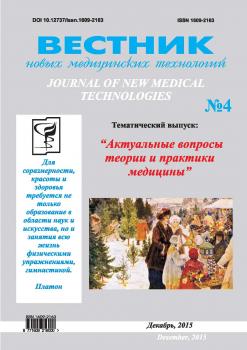The purpose of this research was to study long-term results of osteosynthesis of femoral neck treatment by means of the cannulated screw and to assess the degree of shortening of the femoral neck and its effect on functional outcome. Materials and methods. Minimally invasive osteosynthesis by means of the cannulated screws was carried out in 119 patients with fractures of the femoral neck. The long-term results in 112 (94.1%) patients after osteosynthesis in terms of 1 to 3 years after surgery were analyzed. Results and discussion. Fusion of fracture was noted in 89 (79,4%) cases, non-fusion – in 23 (20,6%) cases. It was es-tablished the dependence of the remote functional outcome from the degree of shortening of the femoral neck. In the presence of shortening of the femoral neck of more than 4 mm of excellent and good results were decreased considera-bly. The dependence of the distant functional results age of the patients was identified. The average age of patients with poor outcome was 77,3 years, with satisfactory – 67,7 years, with a good – 64,1 years, with excellent – 55,9 years. The dependence of the remote functional outcome from the type of fracture according to Pauwels and Garden was determined. Positive results were obtained in fractures type Pauwels I-II, Garden I-II, i.e. at the support fractures and the fractures with little displacement of bone fragments. Conclusions. Minimally invasive osteosynthesis by means of the cannulated screw allows to achieve coalescence fracture in 79,4% of cases, so it may be one of the methods of choice for femoral neck fractures, but can also lead to shortening of the femoral neck.
fracture, femoral neck, osteosynthesis, cannulated screws
1. Belyaeva E.A., Kupeev V.G., Khadartsev A.A. Novaya tekhnologiya bezopasnoy analgeticheskoy terapii pri oslozhnennom osteoporoze. Vestnik novykh meditsinskikh tekhnologiy. 2010. № 3. S. 122-125.
2. Belyaeva E.A., Khadartsev A.A. Teoreticheskie as-pekty vosstanovitel´nogo lecheniya osteoporoza pri komorbidnoy patologii. Vestnik novykh meditsin-skikh tekhnologiy. 2010. № 3. S. 96-98.
3. Belyaeva E.A., Khadartsev A.A.Vosstanovitel´naya terapiya oslozhnennogo postmenopauzal´nogo osteo-poroza: Monografiya. Tula: Iz-vo «Grif i K», 2010. 248 s.
4. Voytovich A.V. Operativnoe lechenie bol´nykh s perelomami proksimal´nogo otdela bedrennoy kosti v sisteme meditsinskoy reabilitatsii: Avtoref. dis. … d-ra med. nauk. Spb, 1994. 30 s.
5. Gemiartroplastika tazobedrennogo sustava pri perelomakh sheyki bedra sovremennymi otechestvennymi protezami / Klyuchevskiy V.V., Gil´fanov S.I., Danilyak V.V. [i dr.]. Endoprotezirovanie v Rossii. 2007. Vyp. 3. S. 297-303.
6. Makarov M.A., Rodionova S.S. Vliyanie strukturnykh osobennostey proksimal´nogo otdela bedrennoy kosti na risk razvitiya perelomov sheyki bedra pri osteoporoze. Osteoporoz i osteopatii. 2000. N 1. C. 32-34.
7. Mikhaylov E.E., Benevolenskaya L.I., Ani-kin S.G. Chastota perelomov proksimal´nogo otdela bedrennoy kosti i distal´nogo otdela predplech´ya sredi gorodskogo naseleniya Rossii. Osteoporoz i osteopatii. 1999. Vyp. 3. S. 2-6.
8. Tseytlin O.Ya., Verbovoy A.F. Rasprostranennost´ perelomov proksimal´nogo otdela bedrennoy kosti v gruppe povyshennogo riska v g.Chapaevske. Osteoporoz i osteo¬patii. 2001. N 2. S. 7-8.
9. Endoprotezirovanie v Rossii: Vseros. monotematich. sb. nauch. statey /pod. red. Akhtyamov I.F., Tikhilov R.M., 2007. Vyp. 3. S. 236-245.
10. Cummings S.R., Melton L.J. Epidemiology and outcomes of osteoporotic fractures. Lancet. 2002. Vol. 359. P. 1761-1767.
11. Risk factors for hip fractures in white women. Study of Osteoporotic Fractures Research Groop / Cummings, S.R. Nevitt M.C., Browner W.S. [et al.]. N Engl J Med. 1995. Vol. 322. P. 767-773.
12. Harris W.H. Traumatic arthritis of the hip after dislocation and acetabular fractures: treatment by mold arthroplasty. An end-result study using a new method of result evaluation. J Bone Joint Surg Am. 1969. Vol. 51A. №4. P. 737-755.
13. Pederson D.R., Brand R.A., Davy D.T. Pelvic muscle and acetabular contact forces during gait . J. Biomech. 1997. Vol. 30. №9. P. 959-965.
14. Tencer A.F., Bucholz R.W., Heckman J.D. Bio-mechanics of fractures and fixation. Rockwood and Green´s fractures in adults. Philadelphia: Lippincott Williams & Wilkins. 2001. Vol. 1. P. 3-35.
15. Zlowodzki M.O., Ayeni, V.A. Petrisor. Femoral shortening after fracture fixation with multiple cancell-ous screws: incidence and effect on function. J Trauma. 2008. Vol. 64. P. 163-169.





